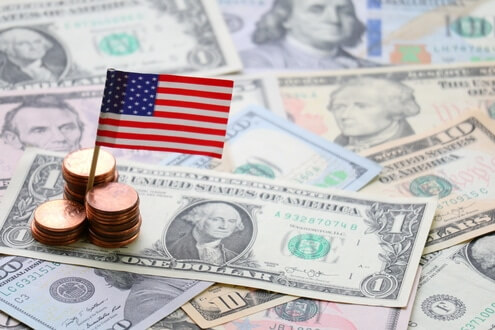
U.S. Economy Loss as Ukraine War Affects Trade
The U.S. economy shrank in the first three months of the year due to trade disruptions resulting from the Ukraine war. Data from the Commerce Department showed that GDP fell by 1.4% year on year. Slow growth was expected, although this figure was worse than forecast; This is the first drop since the 2020 coronavirus-induced recession. Analysts said the rise in imports due to falling exports threw the economy into a worse day than it was.
According to economists, the economy is not falling into recession. Although inflation has peaked in four decades, households have not yet restrained their purchases. Consumer spending, the engine of the U.S. economy, has remained healthy; It has grown at an annual rate of 2.7% in the quarter since the end of last year.
However, businesses faced new delivery delays in the first three months. This makes trade figures more unpredictable than usual. This week showed that the U.S. trade deficit in commodities reached a record high last month. Coronavirus cases have caused outages in China. The Ukraine war changed significant industries, including agriculture and oil.
Analysts said the unexpectedly significant increase in imports, which contradicts U.S. products in GDP calculations, was probably caused by the acceleration of purchases by businesses. Meanwhile, exports declined, partly due to low demand abroad. The decline in government spending also had an impact on growth.
U.S. Economy and Recession Risk
By this time, recovery from the pandemic had been faster than expected, which was helped by public spending, Including pandemic assistance checks for families. In 2021, the U.S. economy extended at 6.9% in the past three months. Analysts said they could not see a recession inevitable despite the contraction; However, they warned that rising prices mean that households will not be able to keep up with spending at the current pace.
Consumers have maintained favourable spending rates by reducing their savings rates. However, if inflation continues to decline in purchasing power, consumers may eventually decide to decline. The U.S. Federal Reserve initiated raising interest rates to rein inflation. However, this also brings economic risks, as such steps are usually aimed at the slow activity. Wells Fargo says it has a 30% chance of a recession in 2023. While the U.S. economy does not appear to be on the verge of another downturn, The likelihood of a recession next year is not insignificant.
Conclusion
The days of a rise associated with the reopening of the economy may be in the past. However, recent figures suggest that substantial growth in the U.S. economy remains strong, at least for now. By the end of 2021, companies were in a hurry to collect supplies to avoid supply chain disruption. The firms wanted to ensure there were no empty shelves during the holiday season. The result was that they did not have to make as many stocks earlier this year.
America’s growing trade deficit also fell 3.2 percentage points from GDP growth. Exports fell sharply, and imports increased. This reflects strong demand in the U.S. and weak economic growth abroad. Meanwhile, America continues to add jobs and business and consumer spending are still strong.
There are a lot of risks – war in Ukraine, inflationary pressures, new variants of Covid, and a shutdown in China. However, the solution to this initial estimate of GDP is that the challenges have hurt more abroad than in the U.S.




